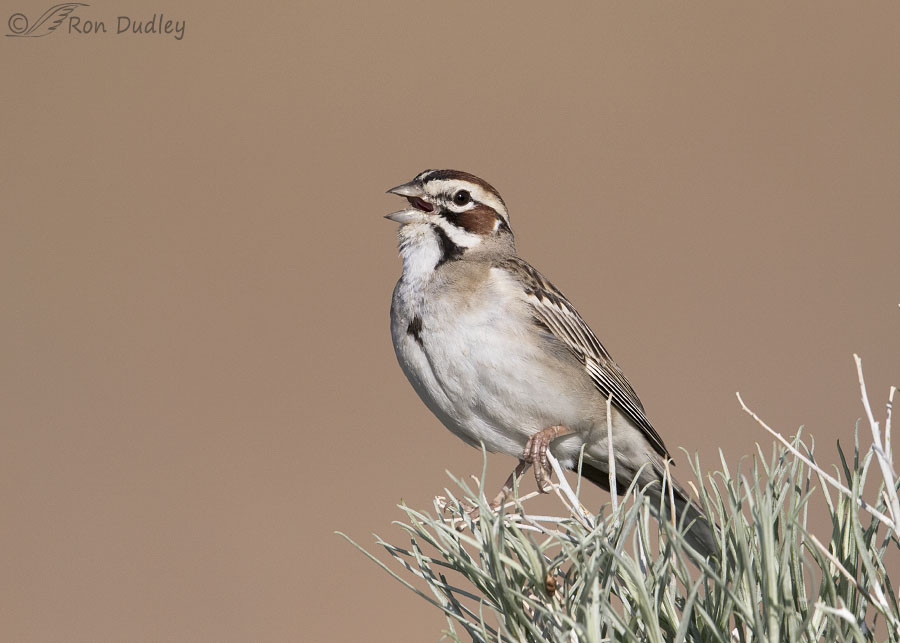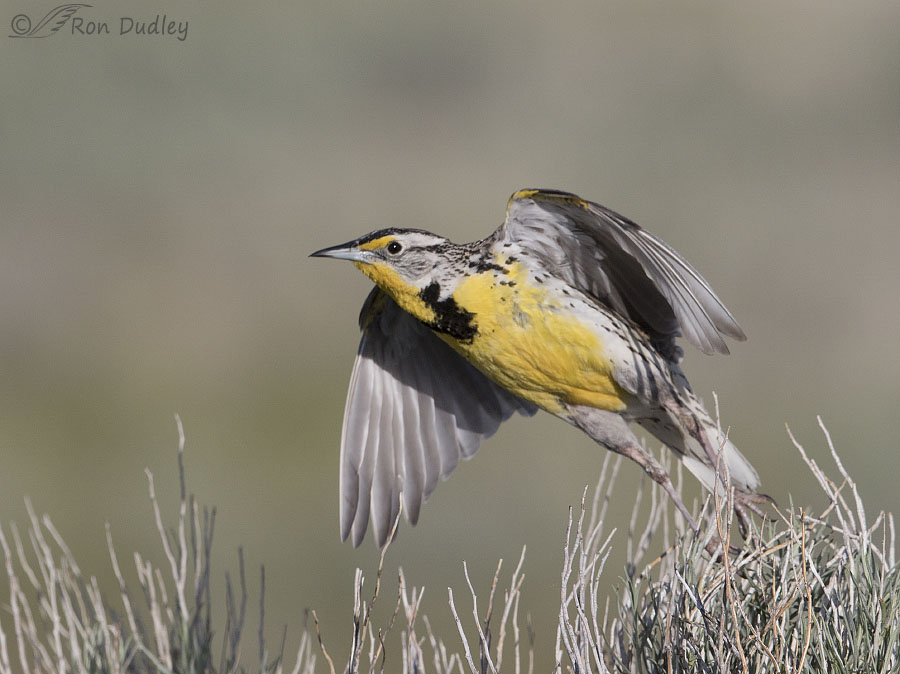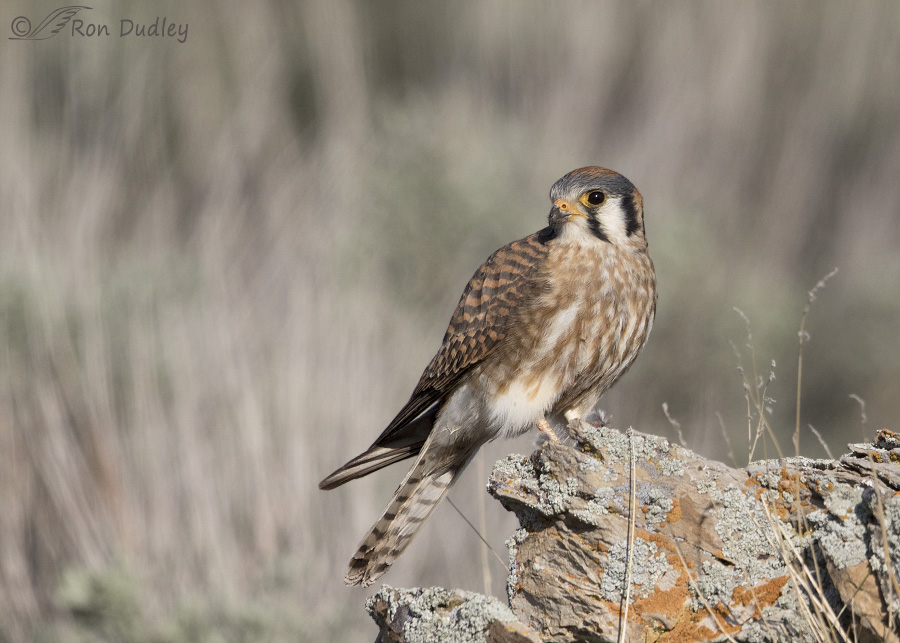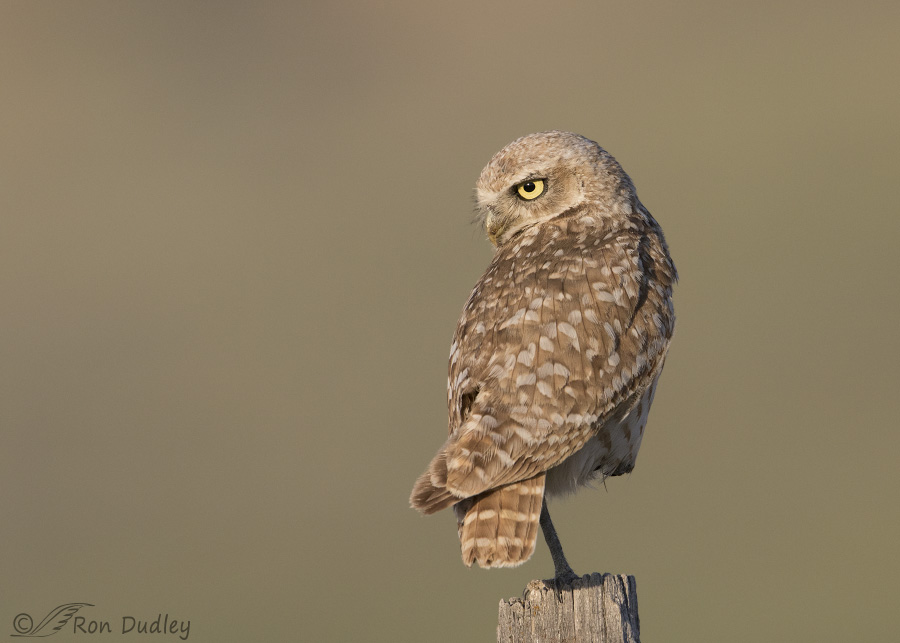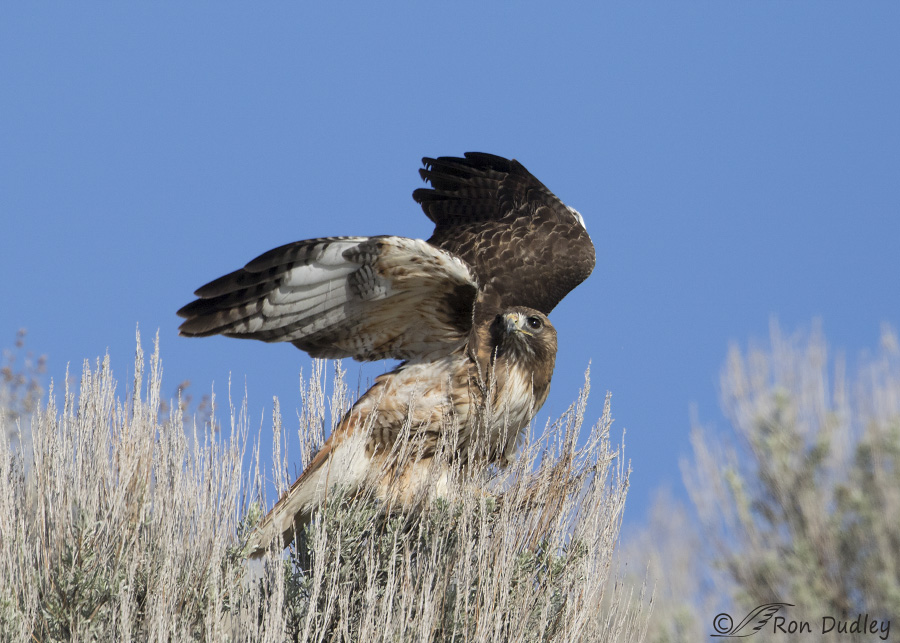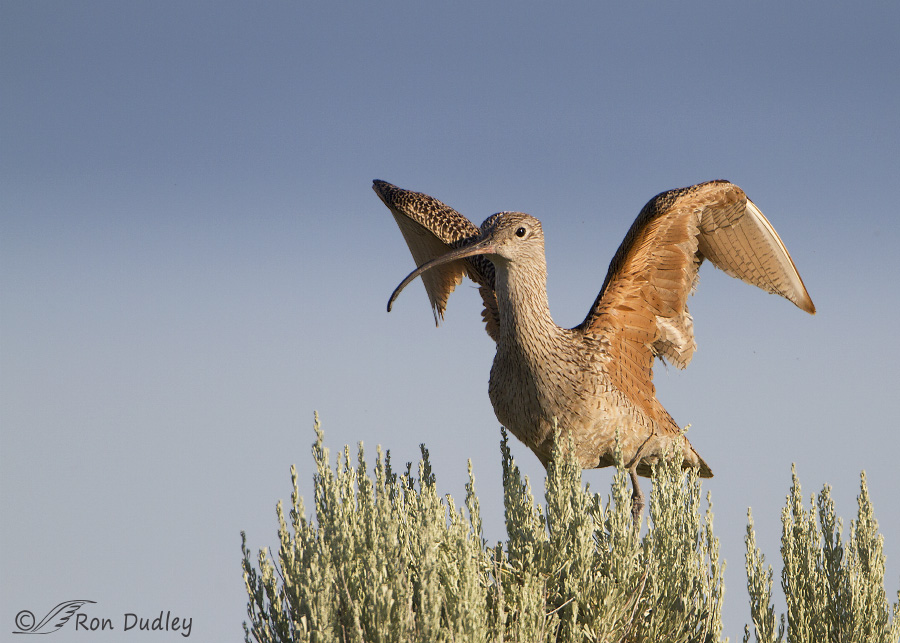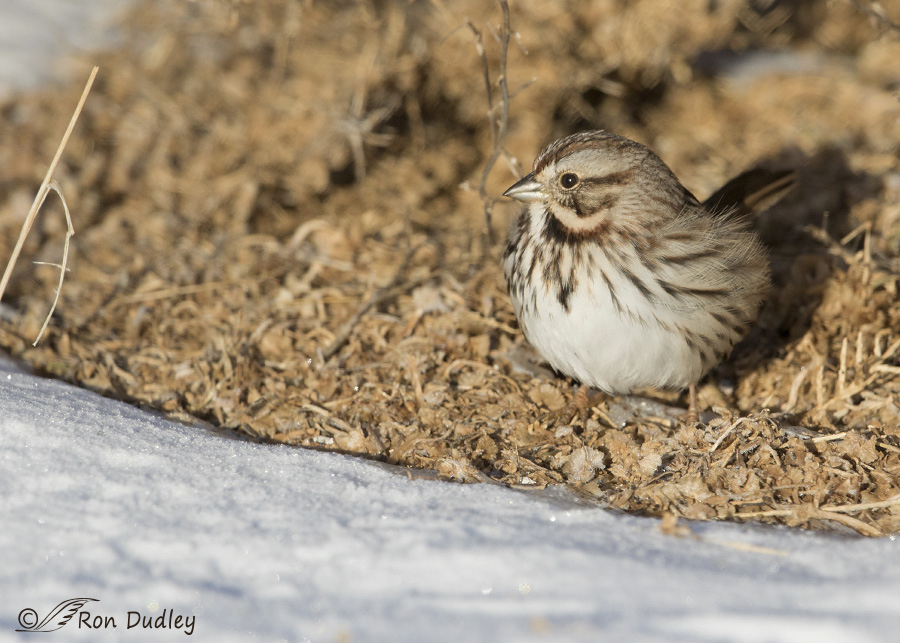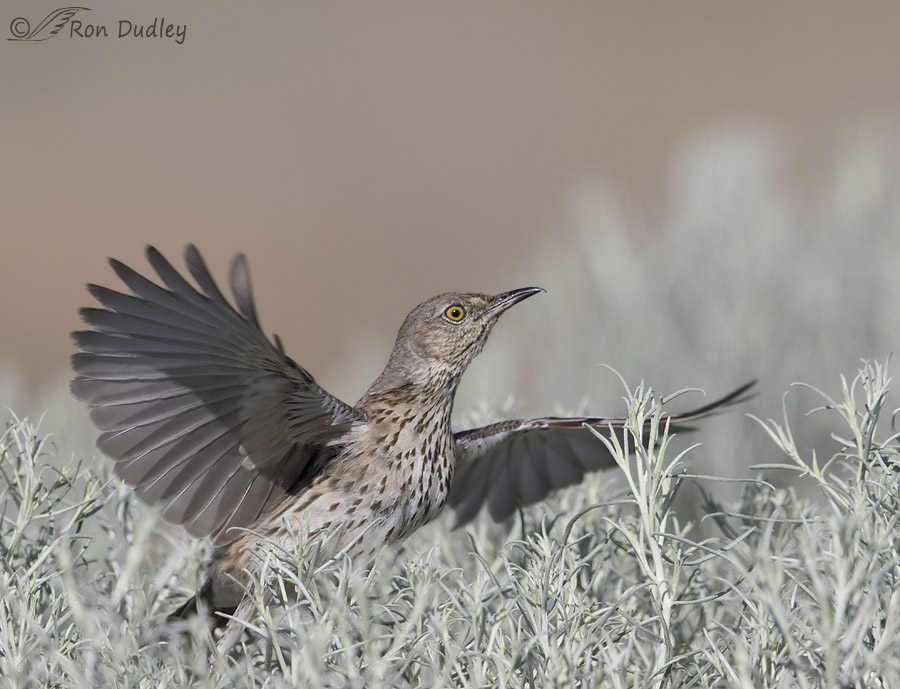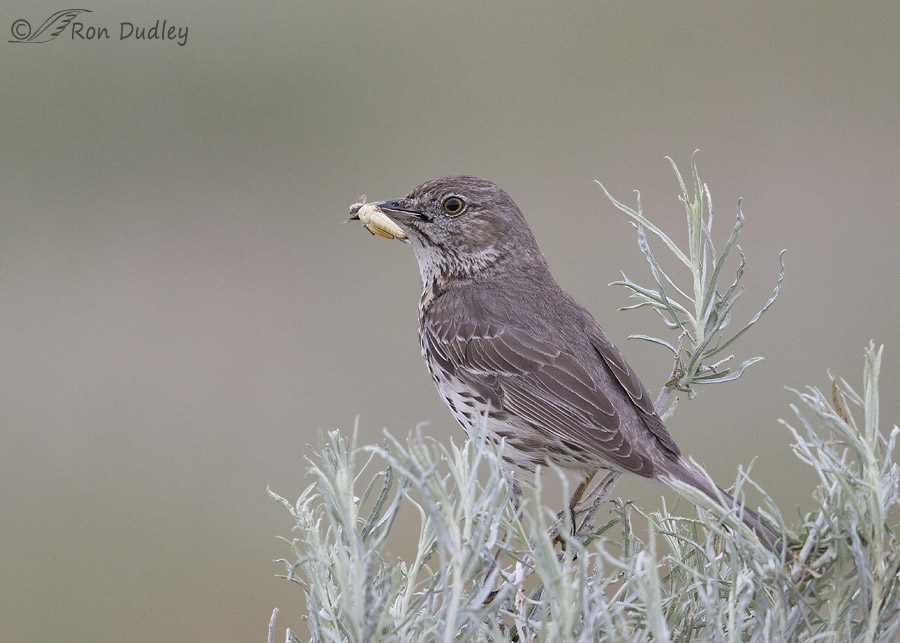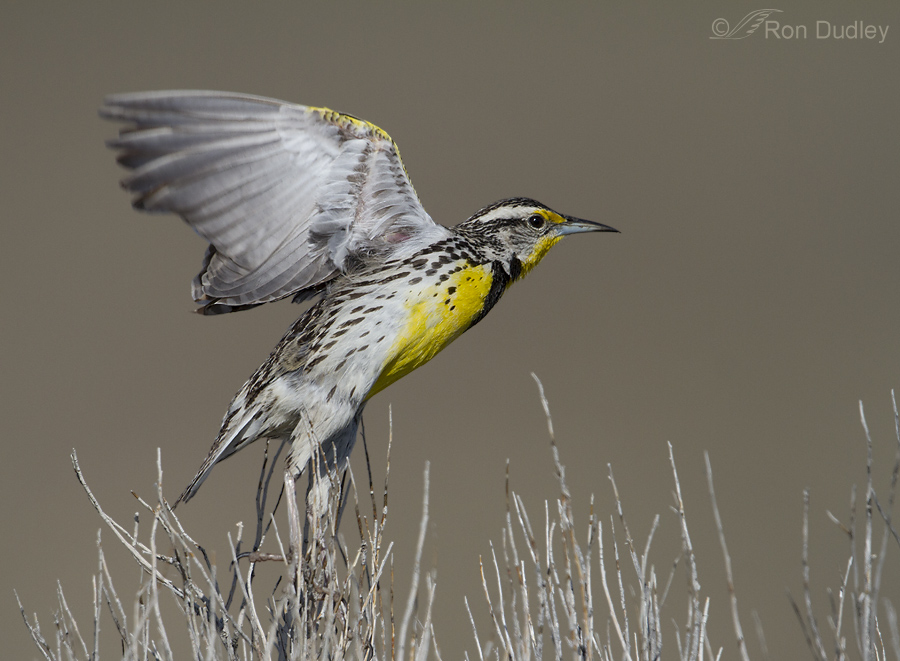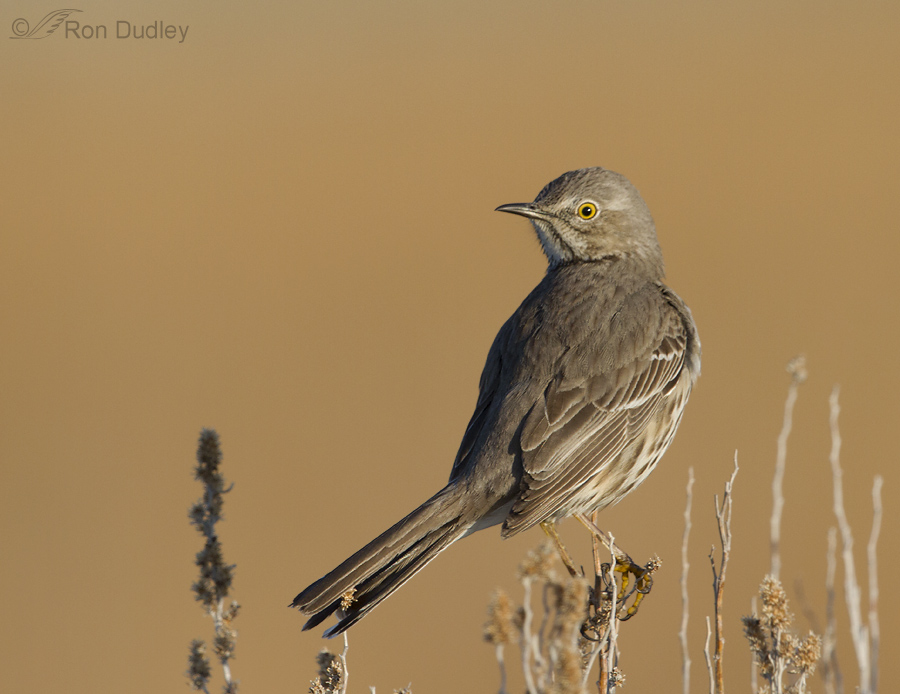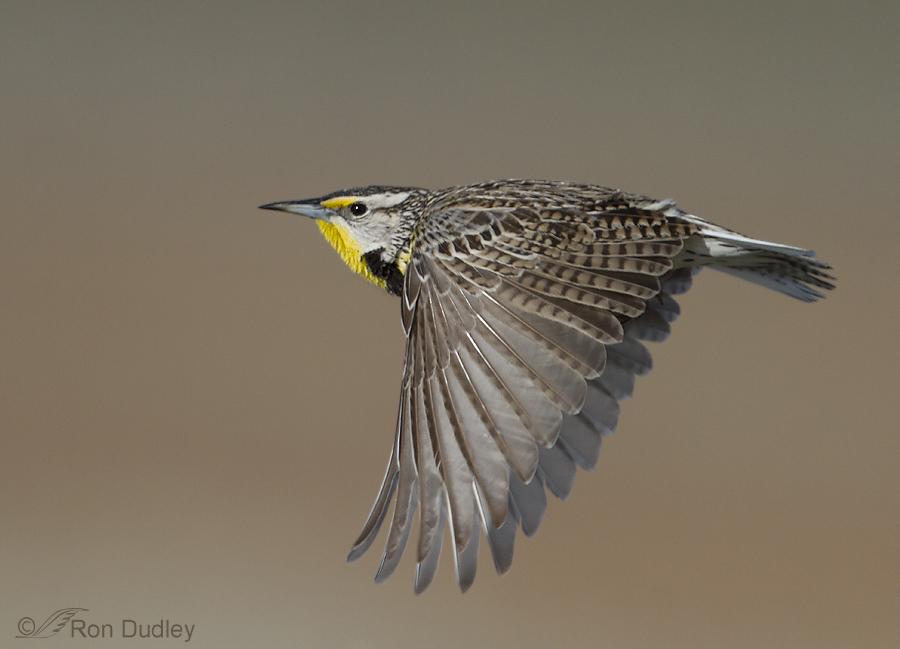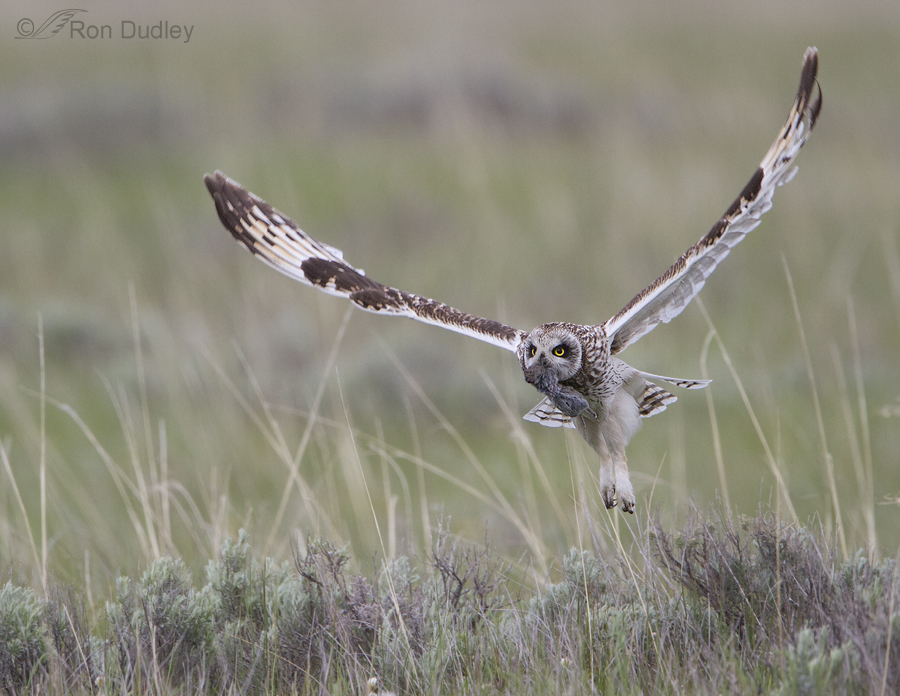Tag: sagebrush
Western Meadowlark Perched And Taking Off
Female American Kestrel In A Setting I Love
The Burrowing Owl And The Meadowlark
Red-tailed Hawk Taking Off And Coming At Me (11 image series)
Long-billed Curlew On Sagebrush
Yet Another Reason Birds Need Appropriate Habitat
Sage Thrasher Rising Out Of Its Namesake Sagebrush
Sage Thrashers – A Hungry Chick And A Dutiful Parent
Anticipating Take-off Angles – Meadowlarks
My “First Of Year” Sage Thrasher
Meadowlark In Flight
Short-eared Owl Carrying A Vole In Its Beak (for a change)
Sagebrush Perches
For me there’s just something wonderful about sagebrush. In fact, lots of things. When sagebrush is wet its smell is almost intoxicating (at least it is for me). When walking through it that scent comes wafting up and my mind can’t help but wander through old memories and cowboy songs. I love the silvery-gray-green color it lends to a hillside. The presence of sagebrush is essential for many species for nesting, habitat, protection or food. Sage Sparrows, Sage Thrashers and Loggerhead Shrikes nest within the plant and larks, Burrowing Owls and Long-billed Curlews nest on the ground in stands of sagebrush. Sagebrush dominates the diet of the Sage Grouse during late fall, winter and early spring. It also makes for an interesting perch for bird photography even though its growth patterns often put obstructions in front of the bird. Since sage is the dominant plant of the Great Basin in many areas I have regular opportunities to photograph birds perched on it. The various species (Big Sage and Black Sage for example) provide variety in color and leaf shape and sometimes you catch the bird on bare twigs or branches or layers of snow/ice on top of the plant. 1/1000, f/8, ISO 500, 500 f/4, 1.4 tc I photographed this Lark Sparrow on sage yesterday – as you can see, the leaf colors are a soft silvery green in early spring. 1/2000, f/8, ISO 500, 500 f/4, 1.4 tc And this Loggerhead Shrike is from this morning, with the Great Salt Lake (not sky) in the background. I thought I’d…
Golden Eagle – Some Progress On A Nemesis
Anyone who follows this blog knows that I have a penchant for raptors and over the last 6 years of photographing them I can count on one hand the number of good opportunities I’ve had with Golden Eagles. I had another chance at one yesterday on Antelope Island. I almost didn’t spot this bird because it was hunkered down so far in the sagebrush (here it is standing more erect in anticipation of flight). 1/1600, f/7.1, ISO 500, 500 f/4, 1.4 tc I knew that my only chance for a few decent images would be at take-off or just after but the angle of light was a problem – the bird was facing almost directly into the sun. If it veered to its right I’d get butt shots and probably lose the head behind the wings. If it turned to its left the face would be in shadow and I’d get no catch light. What can you do but wait, be ready for lift-off and hope for the best from a less than ideal situation? 1/1250, f/7.1, ISO 500, 500 f/4, 1.4 tc Thankfully the eagle launched straight ahead which gave me the best light I could hope for under the circumstances. 1/1250, f/7.1, ISO 500, 500 f/4, 1.4 tc For the first wing-beat I got light on the head and a catch light in two images – then the bird turned slightly toward me and that light was lost. I got several more sharp shots with dynamic flight poses but the face was completely shaded. Curses !!! I…
Western Meadowlark Perched And Taking Off
Female American Kestrel In A Setting I Love
The Burrowing Owl And The Meadowlark
Red-tailed Hawk Taking Off And Coming At Me (11 image series)
Long-billed Curlew On Sagebrush
Yet Another Reason Birds Need Appropriate Habitat
Sage Thrasher Rising Out Of Its Namesake Sagebrush
Sage Thrashers – A Hungry Chick And A Dutiful Parent
Anticipating Take-off Angles – Meadowlarks
My “First Of Year” Sage Thrasher
Meadowlark In Flight
Short-eared Owl Carrying A Vole In Its Beak (for a change)
Sagebrush Perches
For me there’s just something wonderful about sagebrush. In fact, lots of things. When sagebrush is wet its smell is almost intoxicating (at least it is for me). When walking through it that scent comes wafting up and my mind can’t help but wander through old memories and cowboy songs. I love the silvery-gray-green color it lends to a hillside. The presence of sagebrush is essential for many species for nesting, habitat, protection or food. Sage Sparrows, Sage Thrashers and Loggerhead Shrikes nest within the plant and larks, Burrowing Owls and Long-billed Curlews nest on the ground in stands of sagebrush. Sagebrush dominates the diet of the Sage Grouse during late fall, winter and early spring. It also makes for an interesting perch for bird photography even though its growth patterns often put obstructions in front of the bird. Since sage is the dominant plant of the Great Basin in many areas I have regular opportunities to photograph birds perched on it. The various species (Big Sage and Black Sage for example) provide variety in color and leaf shape and sometimes you catch the bird on bare twigs or branches or layers of snow/ice on top of the plant. 1/1000, f/8, ISO 500, 500 f/4, 1.4 tc I photographed this Lark Sparrow on sage yesterday – as you can see, the leaf colors are a soft silvery green in early spring. 1/2000, f/8, ISO 500, 500 f/4, 1.4 tc And this Loggerhead Shrike is from this morning, with the Great Salt Lake (not sky) in the background. I thought I’d…
Golden Eagle – Some Progress On A Nemesis
Anyone who follows this blog knows that I have a penchant for raptors and over the last 6 years of photographing them I can count on one hand the number of good opportunities I’ve had with Golden Eagles. I had another chance at one yesterday on Antelope Island. I almost didn’t spot this bird because it was hunkered down so far in the sagebrush (here it is standing more erect in anticipation of flight). 1/1600, f/7.1, ISO 500, 500 f/4, 1.4 tc I knew that my only chance for a few decent images would be at take-off or just after but the angle of light was a problem – the bird was facing almost directly into the sun. If it veered to its right I’d get butt shots and probably lose the head behind the wings. If it turned to its left the face would be in shadow and I’d get no catch light. What can you do but wait, be ready for lift-off and hope for the best from a less than ideal situation? 1/1250, f/7.1, ISO 500, 500 f/4, 1.4 tc Thankfully the eagle launched straight ahead which gave me the best light I could hope for under the circumstances. 1/1250, f/7.1, ISO 500, 500 f/4, 1.4 tc For the first wing-beat I got light on the head and a catch light in two images – then the bird turned slightly toward me and that light was lost. I got several more sharp shots with dynamic flight poses but the face was completely shaded. Curses !!! I…


